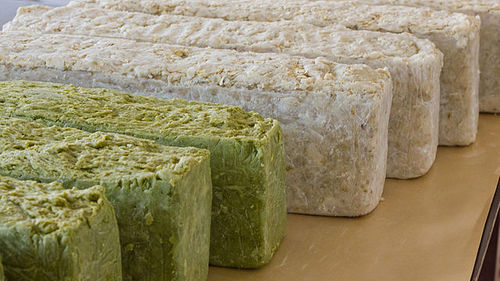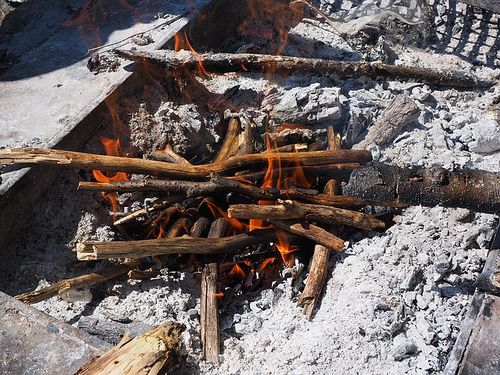Wood Ash
Jump to navigation
Jump to search

Logs of soap made from lye extracted from wood ash.
Wood ash is the powder left over after the combustion of wood. Typically, between 0.43 and 1.82 percent of the mass of burned wood (dry basis) results in ash.
Many uses
- Fertilizer or soil conditioner (potassium and calcium carbonate)
- other uses in gardening: for plants that like alkaline soil; as a slug/snail repellent
- in hydroponic solutions
- as a compost additive (reduces smells)
- pottery (for glaze)
- soap making (see: lye)
- melt ice (eco-friendly alternative to salt)
- mix ash and water to remove stains from furniture
- to make toothpaste (see recipe)
- food preservation: preserve fruits and vegetables; also, "immortal eggs"
- seed preservation
- polish metal
Extraction of minerals
Wood ash contains some useful minerals that can be separated out. Among them is calcium carbonate as the major component, representing 25 or even 45 percent (depending on feedstock and burn conditions). Less than 10 percent is potash, and less than 1 percent phosphate; there are trace elements of iron, manganese, zinc, copper and some heavy metals. However, these numbers vary, as combustion temperature is an important variable in determining wood ash composition. All of these are, primarily, in the form of oxides.
- lye
- calcium carbonate
- sodium carbonate
Links
- Permaculture Magazine: "At Least 10 Uses for Wood Ash"
- http://www.naturallivingideas.com/wood-ash-uses/
